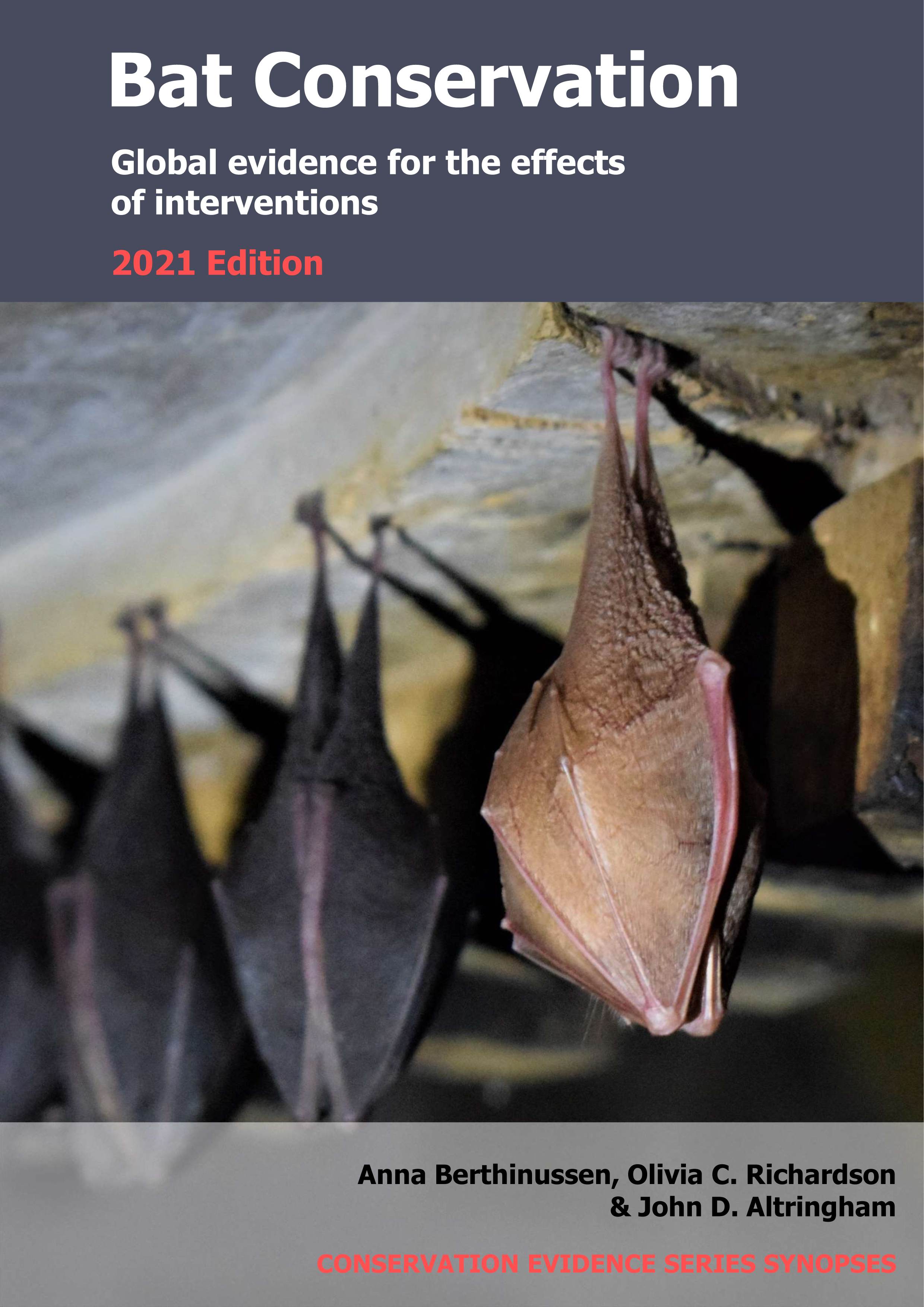Manage microclimate of artificial bat roosts
-
Overall effectiveness category Unknown effectiveness (limited evidence)
-
Number of studies: 3
View assessment score
Hide assessment score
How is the evidence assessed?
-
Effectiveness
40% -
Certainty
30% -
Harms
0%
Study locations
Supporting evidence from individual studies
A replicated, before-and-after study in 2011–2015 of seven building developments with replacement bat maternity roosts across Scotland, UK (Mackintosh 2016) found that two heated bat boxes were used by individual bats at one of seven sites but in numbers lower than the original roost, and none were used by maternity colonies. At one site, two heated bat boxes installed inside the roof of a building were used by individual common pipistrelle bats Pipistrellus pipistrellus but in lower numbers than the original roost (bat box: 5 bats; original roost: average 14 bats). At six sites, heated bat boxes installed on the exterior of buildings were not used by bats. The original roosts were used by maternity colonies of common pipistrelles (average 5–13 bats) and soprano pipistrelles Pipistrellus pygmaeus (average 36–167 bats). The numbers of bats counted before development were extracted from reports submitted with licence applications. Bats were counted at each roost after development during at least one dusk emergence or dawn re-entry survey in May–September 2015.
Study and other actions testedA replicated study in 2012–2013 at six churches in Norfolk, UK (Zeale et al 2016) found that Natterer’s bats Myotis nattereri did not use any of the 12 internal and external heated bat boxes provided after being displaced from roosts inside the churches. Two bat boxes (Bat Conservation International design) containing heat mats and thermostats were installed at each of six churches, one inside the church and one outside at roof height. Acoustic deterrents and artificial lighting were used to deter bats from their existing roost locations inside the churches where droppings and urine were causing problems. Emergence surveys and radio-tracking were carried out at each site between July and September in 2012 or 2013.
Study and other actions testedA before-and-after study in 2014–2016 in one agricultural site in Navarra, Spain (Alcalde et al 2017) found more bats in artificial roosts after they were modified to reduce overheating. During the second summer of the study, five bat pups were found dead after a heatwave. The roosts were modified to reduce overheating, and in the following summer more bats were counted within them than in the previous summer (417 vs 91 Geoffroy's bats Myotis emarginatus, 93 vs 48 greater horseshoe bats Rhinolophus ferrumequinum, 44 vs 33 lesser horseshoe bats Rhinolophus hipposideros and 36 vs 15 common pipistrelles Pipistrellus pipistrellus). In July 2014, two buildings (2.6 x 2.6 x 3.2–4 m), 100 m apart, were constructed as artificial roosts to replace roosts that were destroyed in a building in 2013. With the aim of reducing overheating before summer 2016, the buildings were painted white and the ceiling was elevated. Bats were counted weekly from mid-April to mid-July in 2015 and 2016 using an infrared light.
Study and other actions tested
Where has this evidence come from?
List of journals searched by synopsis
All the journals searched for all synopses
This Action forms part of the Action Synopsis:
Bat Conservation
Bat Conservation - Published 2021
Update 2020





)_2023.JPG)














